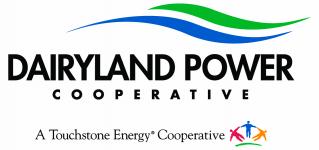A sure sign spring has arrived: Peregrine falcons are returning to their nesting sites after migrating to South America for the winter.
A falcon has been seen at Dairyland's Alma Site nesting box, but has yet to be identified. Each February or March, the falcons return and are identified by their leg bands provided by the U.S. Fish and Wildlife Service and the Raptor Resource Project.
A camera is installed at the Alma power plant location to capture “real time” online birdwatching at the nesting box. Click on the Bird Cam located on Dairyland's website home page to watch the real-time progress as the 2022 nesting season unfolds at our Alma Site.
Background on the Peregrine Falcon Restoration Program:
Dairyland has been fostering the return of the Peregrine falcon to its natural territory along the Upper Mississippi since the 1990s. Once commonly seen in our region, the use of the pesticide DDT put the falcon on the Wisconsin Endangered and Threatened Species list in 1975.
Nesting boxes were installed hundreds of feet up the stacks at Dairyland’s Alma and Genoa generating stations, and in 1997, a pair of Peregrine falcons produced chicks, marking the first successful Peregrine hatch in Western Wisconsin in 25 years. Since then, more than 150 chicks have fledged from Dairyland sites.
This is a great testament to the power of collaboration between industry and the environment. The ultimate goal of the Raptor Resource Project’s utility nesting program is to increase the population to a level where they would return to their natural nesting location.
In 2021, the nesting box and Bird Cam at Dairyland’s Genoa Station #3 were removed due to the retirement of the plant.
